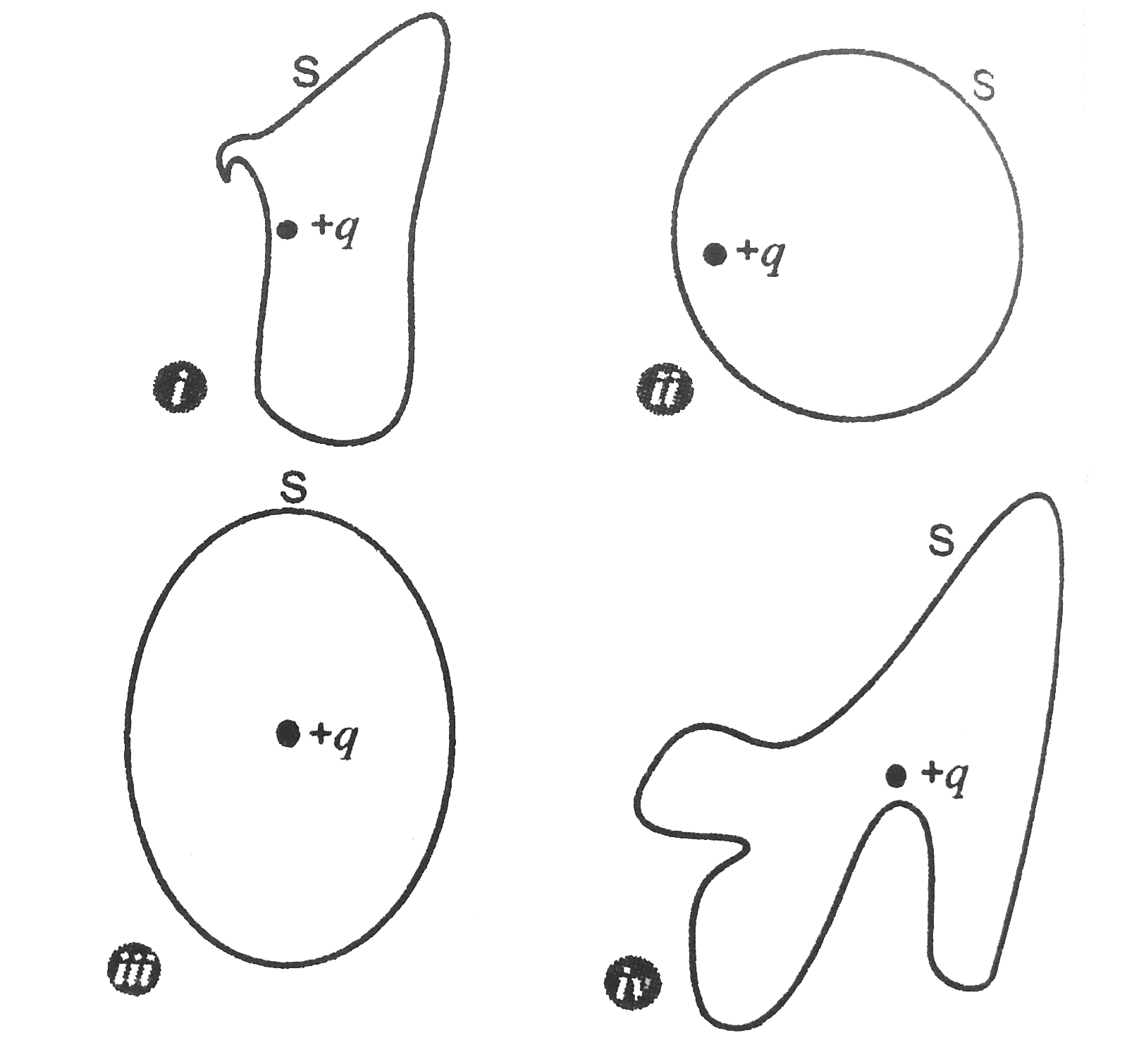Under what conditions can the electric flux ϕE be found through a closed surface?
If the magnitude of the electric field is known everywhere on the surface.
If the total charge inside the surface is specified.
If the total charge outside the surface is specified.
Only if the location of each point charge inside the surface is specified.
The correct Answer is:B
To determine the conditions under which the electric flux ϕE can be found through a closed surface, we can analyze the options provided in the question.
1. Understanding Electric Flux:
Electric flux ϕE through a closed surface is defined as the integral of the electric field →E over the surface area A:
ϕE=∫→E⋅d→A
According to Gauss's Law, the electric flux through a closed surface is directly related to the charge enclosed within that surface.
2. Analyzing the Options:
- Option A: If the magnitude of the electric field is known everywhere on the surface.
- While knowing the electric field everywhere allows for the calculation of flux, it is not a necessary condition according to Gauss's Law. The flux can still be determined if the enclosed charge is known.
- Option B: The total charge inside the surface is specified.
- This option aligns with Gauss's Law, which states that the electric flux through a closed surface is equal to the charge enclosed divided by the permittivity of free space (ϵ0):
ϕE=Qenclosedϵ0
Therefore, knowing the total charge inside the surface is sufficient to find the electric flux.
- Option C: The total charge outside the surface is specified.
- The charge outside the surface does not affect the electric flux through the closed surface. According to Gauss's Law, only the charge enclosed matters.
- Option D: Only if the location of each point charge inside is specified.
- While knowing the location of charges can help in calculating the electric field, it is not necessary to specify the locations of charges to find the electric flux, as long as the total enclosed charge is known.
3. Conclusion:
The correct condition under which the electric flux ϕE can be found through a closed surface is:
- Option B: The total charge inside the surface is specified.
Electric flux ϕE through a closed surface is defined as the integral of the electric field →E over the surface area A:
ϕE=∫→E⋅d→A
According to Gauss's Law, the electric flux through a closed surface is directly related to the charge enclosed within that surface.
- Option A: If the magnitude of the electric field is known everywhere on the surface.
- While knowing the electric field everywhere allows for the calculation of flux, it is not a necessary condition according to Gauss's Law. The flux can still be determined if the enclosed charge is known.
- Option B: The total charge inside the surface is specified.
- This option aligns with Gauss's Law, which states that the electric flux through a closed surface is equal to the charge enclosed divided by the permittivity of free space (ϵ0):
ϕE=Qenclosedϵ0
Therefore, knowing the total charge inside the surface is sufficient to find the electric flux.
- The charge outside the surface does not affect the electric flux through the closed surface. According to Gauss's Law, only the charge enclosed matters.
- While knowing the location of charges can help in calculating the electric field, it is not necessary to specify the locations of charges to find the electric flux, as long as the total enclosed charge is known.
The correct condition under which the electric flux ϕE can be found through a closed surface is:
- Option B: The total charge inside the surface is specified.
Topper's Solved these Questions
- ELECTRIC FLUX AND GAUSS LAWBOOK - CENGAGE PHYSICS ENGLISHCHAPTER - ELECTRIC FLUX AND GAUSS LAWEXERCISE - Multiple Correct
8 Videos
- ELECTRIC FLUX AND GAUSS LAWBOOK - CENGAGE PHYSICS ENGLISHCHAPTER - ELECTRIC FLUX AND GAUSS LAWEXERCISE - Comprehension
36 Videos
- ELECTRIC FLUX AND GAUSS LAWBOOK - CENGAGE PHYSICS ENGLISHCHAPTER - ELECTRIC FLUX AND GAUSS LAWEXERCISE - Subjective
12 Videos
- ELECTRIC CURRENT AND CIRCUITBOOK - CENGAGE PHYSICS ENGLISHCHAPTER - ELECTRIC CURRENT AND CIRCUITEXERCISE - Interger
8 Videos
- ELECTRIC POTENTIALBOOK - CENGAGE PHYSICS ENGLISHCHAPTER - ELECTRIC POTENTIALEXERCISE - DPP 3.5
15 Videos
Similar Questions
If the flux of the electric field through a closed surface is zero,
View SolutionThe electric flux through the surface

View SolutionThe electric flux through the surface

View SolutionThe electric flux through the surface

View SolutionA capacitor of capacitance C is charged to a potential V. The flux of the electric field through a closed surface enclosing the capacitor is
View Solution(A): A point charge is lying at the centre of a cube of each side. The electric flux emanating from each surface of the cube is 1th6 total flux.
(R ): According to Gauss theorem, total electric flux through a closed surface enclosing a charge is equal to 1/ε0 times the magnitude of the charge enclosed.
View Solutionfigure shows the field produced by two point charges +q and -q of equal magnitude but opposite signs (an electric dipole). Find the electric flux through each of the closed surfaces A,B,C, and D.

View SolutionUnder what condition can the process of steam distillation be used ?
View SolutionFig shows three point charges +2q,−qand+3q, What is the electric flux due to this configuration through the surface S ?

View SolutionA metallic ring is connected to a rod oscillates freely like a pendulum. If now a magnetic field is applied in horizontal direction so that the pendulum now swings through the field, the pendulum will

View Solution
